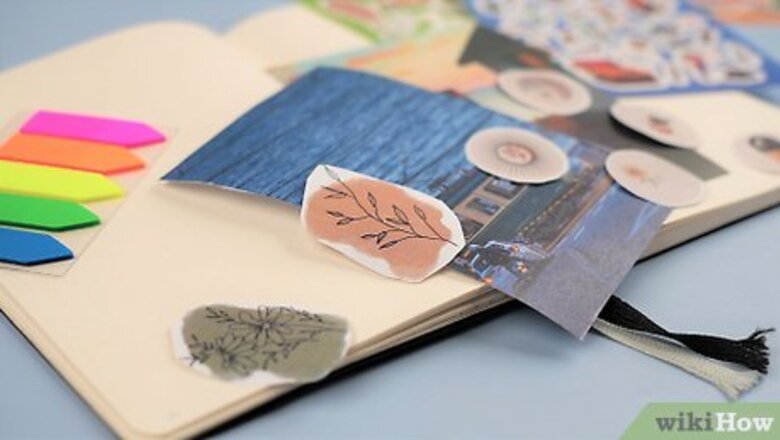
views
Designing Your Scrapbook
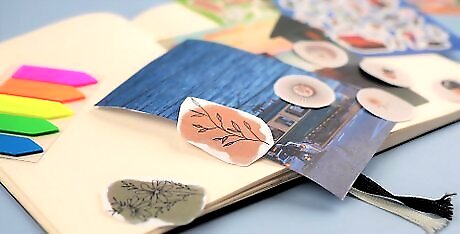
Pick a theme and your materials. Scrapbooks showcase photos, memorabilia, and stories that are united by a theme. The theme may be very general, like a family photo album, or incredibly specific, like a wedding album. It is important to settle on a theme before you purchase your supplies and/or start crafting. Your theme will inform the amount of material you will include, the type of album that you will use, and your color scheme. General themes may include: family, children or an individual child, pet(s), and extended family members. Specific themes may include: wedding, birthday, school year, sports season, vacation, holiday celebration, and pregnancy/baby.
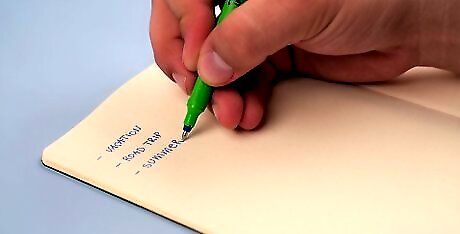
Generate a list of stories and events to include in your album. Once you’ve selected your theme, think about the stories you want to tell and preserve. Take a moment to jot these stories down—you write down keywords, brief descriptions, or complete tales. When your list is complete, look over the items and decide how you want to organize these stories. Will you tell the stories in chronological order or group them by sub-topic? How many pages will you devote to each story?
Select photos and memorabilia for your album. Before scrapbooking, you will need to edit your selection of photos and items several times. During this process, don’t be afraid to be extremely selective. Gather a collection of photos and items that are directly related to your album’s theme. Sit down at workspace with the organized list of stories, your photos, and your memorabilia. Sort the material into categories based on the stories you wish to tell. Place the pictures and memorabilia inside labeled folders or envelopes. Go through each folder or envelope and take out any memorabilia or photos that do not pertain to your narrative. EXPERT TIP Minoti Mehta Minoti Mehta Event & Wedding Planner Minoti Mehta is the Founder of Vermilion Weddings & Events, an event and wedding planning business based in San Francisco, California. Minoti grew up in the event and wedding planning space and has over five years of event planning experience. She has been invited to participate as a Delegate at five exclusive Event Planner Conferences including Destination Wedding Planners Congress and Planners Xtraordinaire and has become known as one of the Top Wedding and Event Planners in the San Francisco Bay Area. Minoti's work has been featured on NDTV India, Love Stories TV, Maharani Weddings, and WedWise India. Vermilion Weddings & Events was also awarded WeddingWire's Couple's Choice Award in 2018. Minoti has a BS in Hospitality Management and Accounting from the University of San Francisco. Minoti Mehta Minoti Mehta Event & Wedding Planner Our Expert Agrees: If you're making a wedding scrapbook, try having several Polaroid cameras around the venue so your guests can take photos of themselves. Also, include markers so they can write notes on the pictures. Then, arrange all of the photos to create a wedding scrapbook full of special memories!
Select paper, embellishments, and tools for your scrapbook. After you’ve settled on a story list and sorted through your images and memorabilia, it's time to settle on a color scheme. Peruse the aisles of your favorite crafting store for cardstock and embellishments that complement your theme and stories. While you’re shopping, pick up any tools you may need to complete the scrapbook. To achieve a cohesive look, purchase paper and embellishments, like stickers and stamps, from the same line and color-families. Buy acid-free, lignin-free and buffered cardstock. This paper will help to preserve your handmade scrapbook. Purchase pigment-based ink pads and pens. Search for ink that is waterproof and fade resistant. Pick up reposition-able and removable adhesives. These products allow you to move items around the page with relative ease. Shop for a paper trimmer, several pairs of scissors, and/or cut-out templates, if necessary.
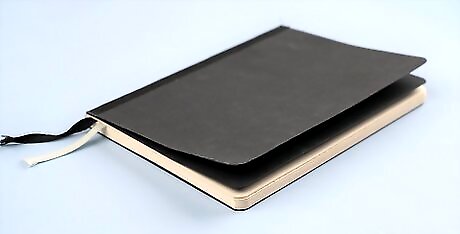
Pick out an album. Scrapbooks are not one-size-fits-all. Select a size that will accommodate your theme, the number of stories you want to tell, the amount of material you intend to use, and the number of embellishments you wish to include. The most common size is 12 x 12 inches. This size is ideal for anyone who wants to fit several images, pieces of memorabilia, writings, and/or embellishments on a single page. It is also great for general albums. The 8 ½ x 11 inches album is ideal for scrapbookers with slightly less material and embellishments to work with. You can fit one to two pictures per page. This is a great size for vacation, school year, child, or pet themed scrapbook. Other common sizes include 8 x 8 inches, 6 x 6 inches, and 5 x 7 inches. These are perfect to give as gifts or to use for a very specific theme. You can fit 1 picture per page. As you shop for an album, pay attention to the type of binding used. There a three general types of bindings: post-bound, strap hinge, and 3-ring binders, or D-rings. Each binding method allows you to move pages around, remove pages, and add additional pages.
Creating Scrapbook Pages
Design scrapbook page layouts. Prior to cutting and adhering your material to a page, devote time to creating a few potential page layouts. In addition to creating a cohesive look, pre-planned layouts will save you a lot of time and prevent you from wasting materials. Remove a few pages from your album. Experiment with the position of photos, memorabilia, designated journal spaces, headings, captions, and embellishments. When you find a layout you like, jot down any relevant dimensions (like photo size) and take a picture of the layout to use a reference.
Layout your page. Choose a story from your list and pull the file of pictures and memorabilia. Remove a page from your album and select one of your pre-planned layouts. Place the pictures, memorabilia, and embellishments onto the page. Adjust the items until you are happy with the layout. Since you have not cut or glued anything yet, you can always switch to a new page layout if needed.
Crop, mat, and glue your photos and memorabilia. After finalizing your page layout, you may confidently start to alter your photographs and memorabilia. Take your time trimming, embellishing, and adhering your items. If you need to crop an image or piece of memorabilia, lightly mark your cut lines on the back of the item with a pencil. Use a pair of scissors or a paper trimmer to cut the item down to size. If you want to draw attention to an image or item, consider matting it. Use paper, fabric, ribbon or pre-cut photo mats to create a border. After cropping your items and creating borders, use an acid-free glue to affix the photos or memorabilia to the page.
Add a title for each story, event, or page. Titles introduce your audience to the story you are telling. The title for each page or narrative should be brief, yet descriptive. To create the title, you may use: Pens Stamps Stickers Stencils Computer and printer Cut-outs
Label your photos and memorabilia and/or include journal entries. Without descriptions, images and memorabilia have little meaning. Collages of items and images are transformed into meaningful narratives by captions and journal entries. Devote time and page space to crafting descriptive captions and thoughtful journal entries. Captions may include: names, dates, locations, and brief descriptions. Journal entries may include: anecdotes, quotes, poems, lyrics, and longer descriptions of an event. Use your list of stories to help you compose your captions and journals. Before adding a caption or journal entry to a page, plan out what you are going to write. Revise your writing and fix any typos. You may handwrite your captions and journal entries or print and adhere them to the page.
Embellish your pages. After adhering the primary items to your scrapbook page, you can dress up the page with embellishments. Embellishments are used to add glitz, dimension, texture, and/or interest to your scrapbook pages. These decorative elements are optional and should be used sparingly. Types of embellishments include: Stickers Stamps Ribbons and fabric Cardstock paper Cutouts
Assemble and Store Your Scrapbook
Insert each page into a protector. In order to preserve your photos and memorabilia, it is important to protect each page of your album. Page protectors are essentially plastic sleeves. They are sold in a variety of sizes and binding styles. Once your page is complete and dry, protect it from dust, dirt, and fingerprints by slipping it into a page protector. Purchase page protectors that match the size and binding type of your album. You may choose between a top-loading or side-loading page protectors. You may select a non-glare or clear finish.
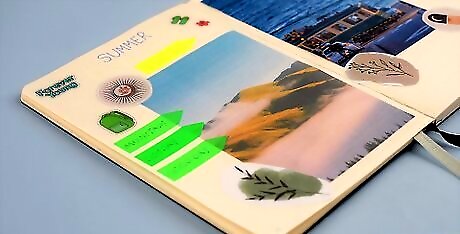
Add the protected pages to your album. Insert your completed scrapbook pages into your album. As you complete more pages, you may rearrange the narratives to fit the storyline of your album. This allows you to work on stories out of order.
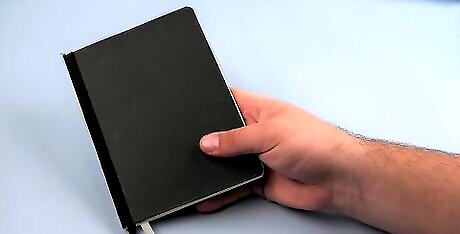
Store your scrapbook in a dry environment. In order to preserve your scrapbook, you must carefully consider where and how to store the album. The ideal storage space is cool, dry, clean, and consistent. Place your album in a flat, preservation-quality box. Do not store your album near radiators and vents or areas of your home that is prone to leaks.















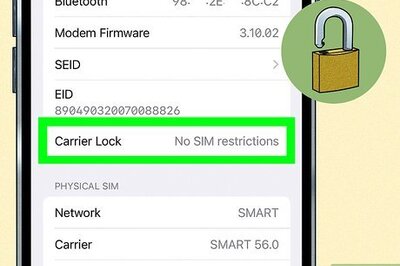




Comments
0 comment